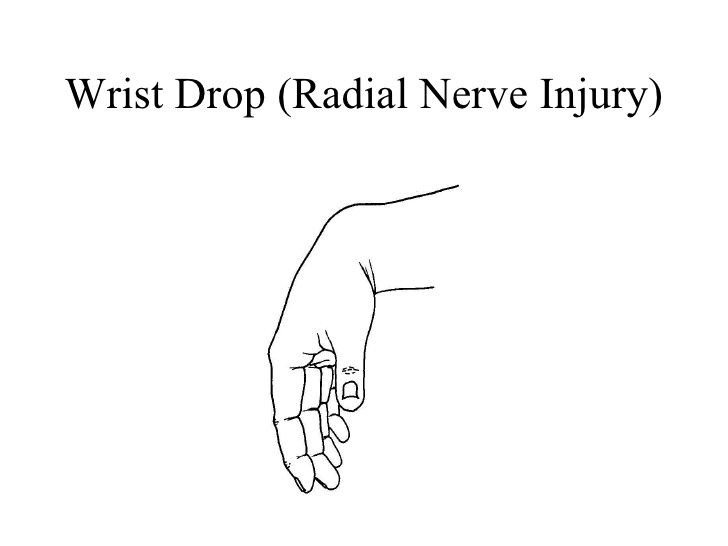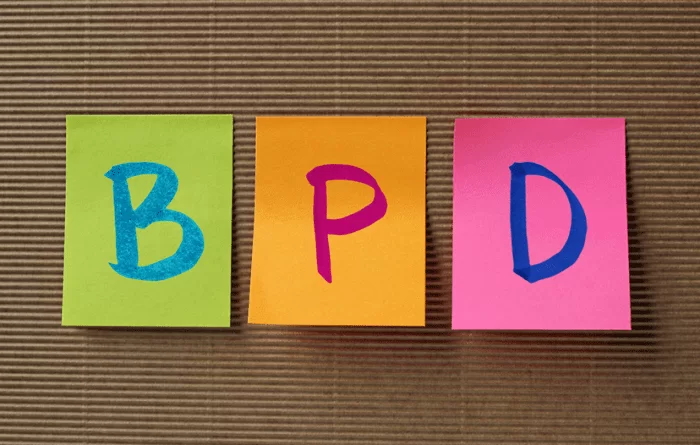Transverse abdominis stretching exercise
Table of Contents
What is transverse abdominis stretching?
- The transverse abdominis stretching exercise is an essential exercise to increase the flexibility of the lower back & there are many health benefits if the patient does stretching regularly.
- A transverse abdominis is the deepest muscle in an abdomen region. This would not give you the much-desired six-pack look but this unsung hero of the abdominal muscles, the muscle acts as a natural lifting belt keeping our abdominal organs protected as well as giving support to the pelvic & lumbar region.
- A transverse abdominis muscle is most important for moving our limbs. When this comes to daily stretching exercises, the abdominal muscles are often overlooked. So, the patient has to concentrate on abdominal stretching as well as improve the flexibility of the spine as well as protect the back from injury & pain.
Health benefits of the transverse abdominis stretching exercise
- A good posture: When the transverse abdominis muscles are tight, the patient may naturally tend to slouch posture owing to the patient does not have the musculature to support proper alignment. Flexible transverse abdominis help the patient to maintain good posture by assisting prop up the spine so it feels more natural to stand tall with the arms as well as legs in alignment.
- Assist to give a better performance in sports.
- Assists to give the patient a Firm as well as toned trunk
- The stretching decreases Low Back Pain: Transverse abdominis muscles act as the anchor for muscles of the middle as well as the lower back. If the abdominals are tight, this forces the back muscles to work harder to support the middle as well as the lower back.
- Transverse abdominis stretch improves the endurance of the muscles of the back so the patient fatigue less easily & is less vulnerable to strain or injury.
- Decrease the tightness of the muscles, resulting in you an improved range of motion.
- Increases flexibility as well as mobility-Stretching a muscle after a workout may help increase flexibility & mobility.
- Boosts recovery: By stretching the abs, the patient is helping the muscles back to full motion & recover faster so the patient may work out again soon.
- Brace the body for exercise-Doing dynamic stretches: Stretches based on a motion before the patient works to outlet the abdominal muscles to warm up & to get prepared for an activity ahead.
There have different techniques to stretch the transverse abdominis muscles
- Cobra Pose
- Cat-Cow Stretch
- Chest opener on the exercise ball
- Bow Pose
- Locust Pose
- Hollow body hold
- Dead bug
- Toe taps
- Bird-dog
- Plank
Cobra Pose
- How to perform it?
- A cobra pose assists to open up the hips & gives the abdominal muscles a gentle stretch.
- To perform a stretch the patient has to lie with the face facing downward on the floor or an exercise mat. It is the starting position.
- With the hips flat on the ground, push the upper body upward, during looking straight ahead. It will stretch the abdominal muscles.
- Hold this position for 20 seconds, then come back to the start position.
- Repeat 3 to 4 times.
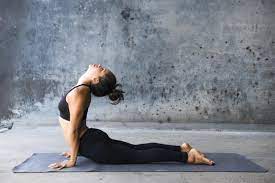
Cat-Cow Stretch
- How to perform it
- The stretch assists with the mobility as well as the flexibility of the transverse abdominal muscles. This also gives assistance to stretching as well as strengthens the abdominal & lower back muscles.
- To do the stretch the patient has to come on the hands as well as knees, & tuck the head down as you arch the back, similar to how the cat does it.
- Now Extend the neck as much as possible, & drop the tummy all the way downwards, stretching a transverse abdominal
- muscles.
- Hold for 20 seconds, then come back to the starting position.
- Repeat 3 to 4 times.

Chest opener on the exercise ball
- How to do it?
- The stretch promotes relaxation & gives the transverse abdominis a thorough stretch. This also stretches the shoulders as well as the chest muscles.
- To do this stretch the patient has to take the supine lying position on an exercise ball. The shoulder blades, neck, as well as head should be on the top of a ball, with the back should be extended, feet flat on the ground, as well as knees, flexed at ninety degrees.
- Embark the stretch by opening up the arms & letting them fall to the side of a ball. Make sure the patient is looking up at the sky.
- Hold for 20 to 30 seconds.
- Repeat 3 to 4 times.
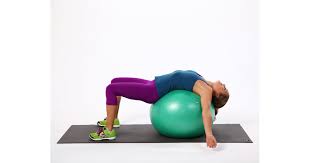
Bow Pose
- How to perform it?
- Embark the stretch by lying on the stomach with the knees together as well as flexing at a ninety-degree angle.
- Lift the chest & abdomen off the ground while keeping the pelvis & thighs on the ground.
- Move the arms backward & hold the ankles as you pull the legs up as well as push the chest out.
- The neck can be stable with the spine by looking at a wall in front of you throughout the stretch.
- Hold the abs stretch for thirty seconds & then slow down the upper body as well as legs to the ground. Hold for 20 to 30 seconds.
- Repeat 3 to 4 times.

Locust Pose
- How to perform it?
- Embark this stretch by lying on the belly with the arms at the side, positioned against the side of the legs.
- Raise the chest as well as the legs making the boat shape, so the patient has an inward curved back.
- Relax as well as come back lower to the ground.
- Hold the boat pose for 15 seconds.
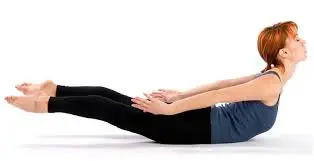
Hollow body hold
- A hollow body hold is a great exercise to test the core strength as well as target the transversus abdominis.
- First of all, lie on the floor with the arms straight above the head as well as legs together on the ground.
- With the core engaged & legs together, point the toes & lift the legs around 12–18 inches (30-46 cm) off of the floor.
- Slowly lift the shoulders off of the ground so that the lower back, as well as hips, are the only body parts touching the floor. Keep the neck in a neutral position with the chin slightly tucked in to prevent strain.
- Hold the pose for 15–30 seconds, or however long the patient can maintain proper form with the core engaged.
- Tip: To know you are practicing proper form, the body should look like the shape of a banana.
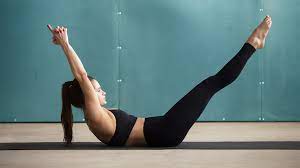
Dead bug
- A dead bug exercise is a great exercise for core engagement & great for those who struggle with balance.
- To embark, lie on the back with the arms extended up toward the ceiling & the knees bent in a tabletop position (knees bent at a 90- degree angle as well as shins parallel to the ground).
- With the core engaged, straighten the left leg (toes pointed out) and lower the right arm to reach behind the head, parallel to the ground. Do not let the arms or legs touch the ground, keep them around 6 inches (15 cm) from the floor.
- Return the arm as well as a leg to the beginning position & alternate sides.
- Repeat this for 30–60 seconds, or however long you may maintain proper form.
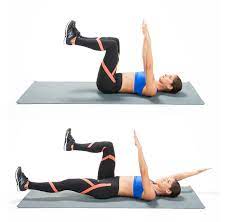
Toe taps
- Toe taps is a popular Pilates move that targets the core.
- Lie on the back with the arms to the side as well as knees bent in a tabletop position (knees bent at a 90-degree angle and the shins parallel to the floor).
- Keeping the knee bent, exhale & lower the left toes to tap the group. Make sure the core is engaged and the spine is stable against the movement of the leg. Ensure that the back does not arch as the foot lowers.
- Inhale as well as return the left leg to the embarking position.
- Repeat this with the right leg.
- Continue to alternate sides for 30–60 seconds.

Bird-dog
- A transversus abdominis is engaged when the patient moves the arms and legs as well. A bird-dog requires you to lift the opposite arm as well as the leg while maintaining balance, which targets the deep core.
- Start on all fours with the knees aligned with the hips and the shoulders aligned with the hands. Be sure the back is flat as well as the neck in a neutral position.
- Extend the left arm forward & the right leg back while leaving the other arm & leg on the ground for support.
- Hold for 2–3 seconds, making sure to engage the core the entire time. Then, alternate sides.
- Repeat this 8–12 times.

Plank
- A plank is a great exercise for well-rounded core strength. As the patient performs this exercise, focus on drawing the abdominals inward.
- Start in the pushup position with the elbows as well as forearms at the side & the palms facing down.
- Push the hands into the floor & raise the torso off of the ground. The body should look as if you are in the upward position of the pushup. Ensure the hands, as well as shoulders, are aligned, the legs are straight, the feet are hip-width apart, and the core is engaged.
- Hold the position for as long as you may while maintaining proper form & keeping the core engaged.

There are some mistakes the patient should not do during transverse abdominis stretch
- Overstretching: Overstretching while this abdominal stretch could increase the risk of injury & even pulling the muscle, most likely in the obliques. The patient has to stretch a muscle enough that they feel the stretch only & nothing more, but the patient should stop stretching the muscle as soon as they feel any pain.
- Overarching the back: Overarching the back puts much stress on the muscles in the torso, as well as the quadriceps & hamstrings.
- Flexing the knees too much: By over-flexing the knees, the patient will put extra pressure on the legs, particularly the knees, which could cause pain and aches. Standing in this wrong position could also make the stretch unnecessarily difficult, the amount of time that the patient can experience it & as a result, make it less effective.
- Bending too far over laterally: Leaning too more while stretching causes a rise in the risk of injuries by giving extra strain to the obliques. Instead, move in the comfortable yet stretching circular motion.
- Going too slow: It is one of the ab stretches that is required to be done at a moderate speed. The crunching action could be a sluggish as well as controlled motion as moving too fast would put a strain on the obliques.
- Putting the head on a ball: The patient does not need to overextend the back & have the lower back on the ground as it could cause backache as well as strain. Instead, assure the patient has her shoulders as well as lower back raised onto a ball for optimal support.
- Moving too quickly: Stretching is slow-motion, & rushing will not allow the patient to feel the full advantages of ab workout stretches. So avoid rushing through the motion, take it slow & assure that you feel the muscles stretching.
There are so many guidelines the patient needs to follow while the Transverse abdominis stretching exercise
- Avoid quick movements: Avoid doing any fast or even jerky motions while stretching. This involves bouncing during moving through & holding the stretch.
- Only went as much as a patient could: During any type of stretching, this goal was to only go to the point of tension. If the patient goes beyond this, he rises the potential for injury.
- Decrease the range of motion if the transverse abdominis hurt: If the patient is feeling too much tightness or discomfort in the torso area, go easy on the stretching, & consider reducing the range of motion. The patient does not have to perform a full range of motion to benefit from stretching.
- Warm up for eight to ten minutes before stretching: The mild warm-up activity will get the blood pumping, prepare the muscles for stretching, as well as avoid injury. The brisk walk, jumping jacks, light jog, & other aerobic exercises are great warm-ups. This is also better to stretch after a workout.
- Do not bounce while the patient give stretching. Hold the stretch stable instead of springing in as well as out of it. Bouncing when you stretch may cause a pulled muscle or another injury.
- Breathe during you perform stretching. Never hold your breath while stretching or even performing any other exercise. Breathe in as you move into the stretch pose, breathe out as you stretch, then inhale again as you come back to the starting position.
- Stretch muscles for a few minutes 3 times per week. Stretching the same muscle group deeply every day poses an injury risk. Instead, stretch an opposite muscle group per day. Aim to stretch specific muscles for 2 to 3 minutes 2 to 3 days per week.
- Consult the physiotherapist if you have any recent injuries. Many individuals think that stretching is best if you are in pain or have a strained muscle. However, stretching the harmed muscle may cause further injury.
- The patient should also consult the doctor before stretching if they have a damaged muscle or a history of heart, bone, or even joint issues.
FAQ
What occurs if transverse abdominis is weak?
If the transverse abdominis muscles are weak, an abdominal wall will start to bulge forward as well as the pelvis may rotate forward as well as increase lordosis (inward curvature) in the spine.
How does the patient engage the transverse abdominis?
Lie flat on the back as well as bend the knees with feet flat on the ground. Place the fingers in the hip crease & inhale deeply. Exhale as well as draw the belly towards the spine. The patient should feel tension, indicating that they are located in the transverse abdominis muscles.
How do you know if the transverse abdominis is weak?
Typical signs of the weak transversus abdominis are toned abdominals above the navel but the bulge below it. A client may experience: the inability to hold in the stomach after a large meal or even when gassy; low back fatigue after prolonged standing or even walking.
What does the weak transverse abdominis look like?
Some signs of the weak transverse abdominis muscle are having toned abdominal muscles above the navel but a bulge beneath it. The patient might also have a difficult time holding in the stomach after eating the meal or have low back fatigue & pain after prolonged exercise, standing, or walking.
What exercise activates the transverse abdominis muscles the most?
Crunch, Even though it is one of the most basic ab exercises, the crunch may be truly effective. This targets the rectus abdominis or the six-pack muscles. Lie on the back on a mat, knees bent, feet on the ground, & arms crossed over the chest.
Which exercise primarily targets a transverse abdominis?
Planks are the classic way to target the transversus abdominis, but a study by Australian researchers found that “the inward motion of the abdominal wall in supine” (for example, performing a hollow hold) produces potentially even greater muscle activation.


